Fireplace Buying Guide

Direct Vent or Ventless?
Empire Fireplaces come in two main types, Direct-Vent and Vent-Free. Direct Vent Fireplaces Require a built-in vent to intake outside air while Ventless uses the air inside your home. Below We'll go over which types is right for your home!
Ventless Fireplaces
A Vent-Free system uses room air for combustion and delivers 99.9% of the available heat energy directly to the room. Vent-Free systems have an unmatched safety record, thanks in part to their clean-burning technology and their Oxygen Depletion Sensor, which instantly shuts off the valve if oxygen in the room drops to and unsafe level. Because no venting is required, Vent-Free systems offer more installation options.
Vent-Free systems are limited to 40,000 Btu and must be operated as supplemental heating sources in conjunction with a central furnace that circulates air.
Advantages:
- Unmatched efficiency – 99.9%
- Offers the most installation versatility
- Usually less expensive to buy and to install
- Can operate with a remote or thermostat
- Most systems can provide live-saving heat during a winter power outage
- Choose fireplace, insert, heater, cast iron stove, burner and log set, or contemporary burner
Direct-Vent Fireplaces
A Direct-Vent system uses two vent pipes. One draws air in from the outdoors to support combustion. The other exhausts the by-products of combustion to the outside. The two vent pipes may be concentric (exhaust pipe within a larger diameter intake pipe) or co-linear (separate pipes of about the same size).
Combustion takes place inside a sealed chamber – with a glass front in the case of a fireplace. Room air circulates around the combustion chamber, often assisted by a blower, to heat the room.
A DV system is often installed along an outside wall to simplify the vent run, but can also be installed elsewhere in the home and vented through the roof.
Advantages:
- Good efficiency – 60 to 80%
- Good heat output with thermal transfer through the glass and air circulation
- Separates room air from combustion air
- May be used as primary heat source
- Can operate with a remote or thermostat
- Most systems can provide life-saving heat during a winter power outage
- Choose fireplace, insert, cast iron stove, or heater
Ignition System Controls
Millivolt Ignition (Standing Pilot)
A standard millivolt system is always running, even when the fireplace is off. This is called a standing pilot light, and it ensures that whenever you are ready to turn the fireplace on and enjoy some flames, your pilot light can light the main burner. The entire millivolt system requires no external power source, and it all relies on the pilot light running.
Pros and Cons Of A Millitvolt System:
- The system has been in circulation with fireplaces, furnaces, and hot water heaters for 50-plus years. Most installers and technicians are familiar with it. Should anything fail, it is very easy to diagnose.
- All appliances using a millivolt gas ignition system can use an on/off switch or remote control. This allows you to use the appliance with a flip of a switch or from your recliner.
- The safety it provides gives you piece of mind knowing that, in the rare occurrence there is a failure, the unit will mechanically shut down.
- The main disadvantage is that this system uses more energy than an intermittent pilot. Since the pilot light stays on 24/7 barring an issue, it burns fuel even when the heater isn't in use, adding unnecessary charges to your utility bill in the warmer months.
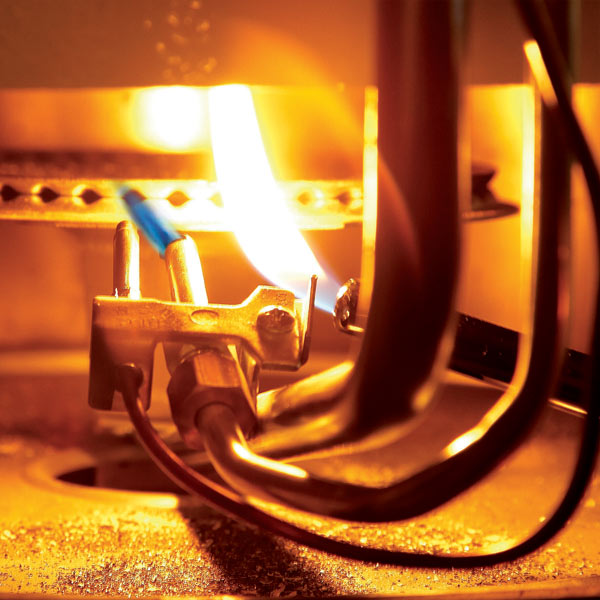
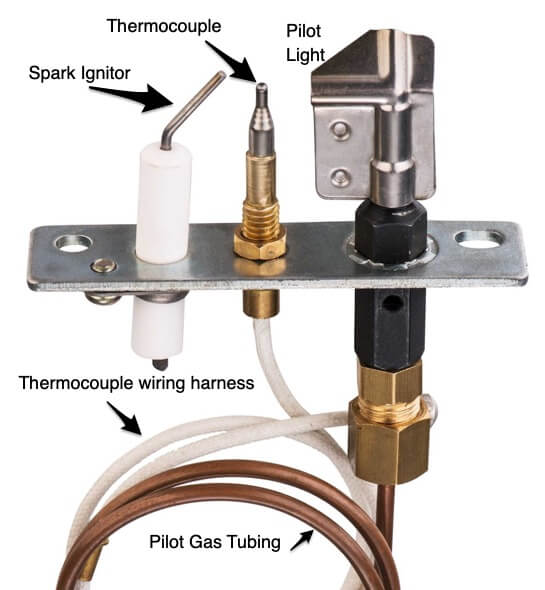
Electronic Ignition (Intermittent Pilot)
An intermittent pilot system requires electricity to operate whether in the form of 120VAC power or batteries. Intermittent pilot ignition systems feature a control module/board to carry out the ignition system. Once the switch or remote is used, the ignition sequence begins.
First, the igniter will begin to spark and electricity is sent to the pilot side of the valve to energize the electromagnetic device to open up the pilot gas. When you have spark, fuel, and oxygen, the pilot will light. As soon as the pilot is lit, the pilot flame engulfs a sensor which sends a signal back to the unit's control module to shut off the igniter and send electricity to the burner side of the valve. This opens the valve up and allows the pilot light to ignite the main burner flame.
Pros and Cons Of An Intermittent Pilot System:
- Without a standing pilot light, you are not wasting fuel when not using the fireplace.
- Most intermittent pilot systems have a battery back-up feature that can operate the system for several months or more. This allows the unit to be used in a power outage.
- An experienced tech will be needed on-site should the unit not work properly. Repairs are often more time-consuming and costly as a result.
- If the pilot sensor does not sense the pilot light, the system will not work and no unwanted gas will pass through the system, preventing gas build-up in the home.
Which Model Matches Your Lifestyle?
Boulevard Fireplaces
Boulevard Linear Fireplaces provide the perfect scale for today’s large spaces – from a spacious family room to a hotel lobby to an upscale restaurant. The Boulevard can be tailored to your décor, whether traditional or contemporary, and comes in a variety of sizes– 36-inch, 48-inch, 60-inch, and 72-inch single-sided, and 48-inch see-through.
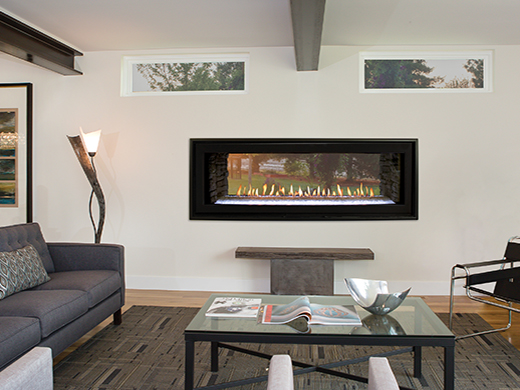
Tahoe Fireplaces
Tahoe Clean-Face Deluxe models feature our Contour tube-style burner, designed to complement the hand-painted ceramic fiber log set, and produce a natural dancing flame. The Clean-Face Deluxe Fireplace comes with a discreet air distribution channel that eliminates the look of louvers, yet still allows you to operate the optional blower. It features a large tempered glass window that provides an unobstructed view to the log set.
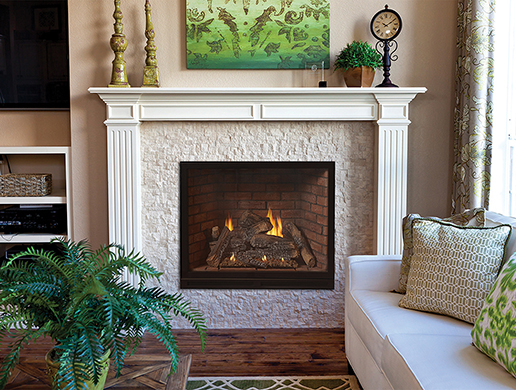
Loft Fireplaces
The unique Loft Series Fireplace includes a Loft burner in a compact system. This versatile unit installs as a zero-clearance vent-free fireplace or as an insert in an existing fireplace.

Vail Fireplaces
At 99.9 percent efficient, the Vent-Free Vail Fireplace delivers more heat for your energy dollars – 32,000 Btu for the Vail 32 and 36,000 Btu for the Vail 36. Ceramic glazed pellets in the burner tumble and swirl the gas to produce a natural flickering flame.
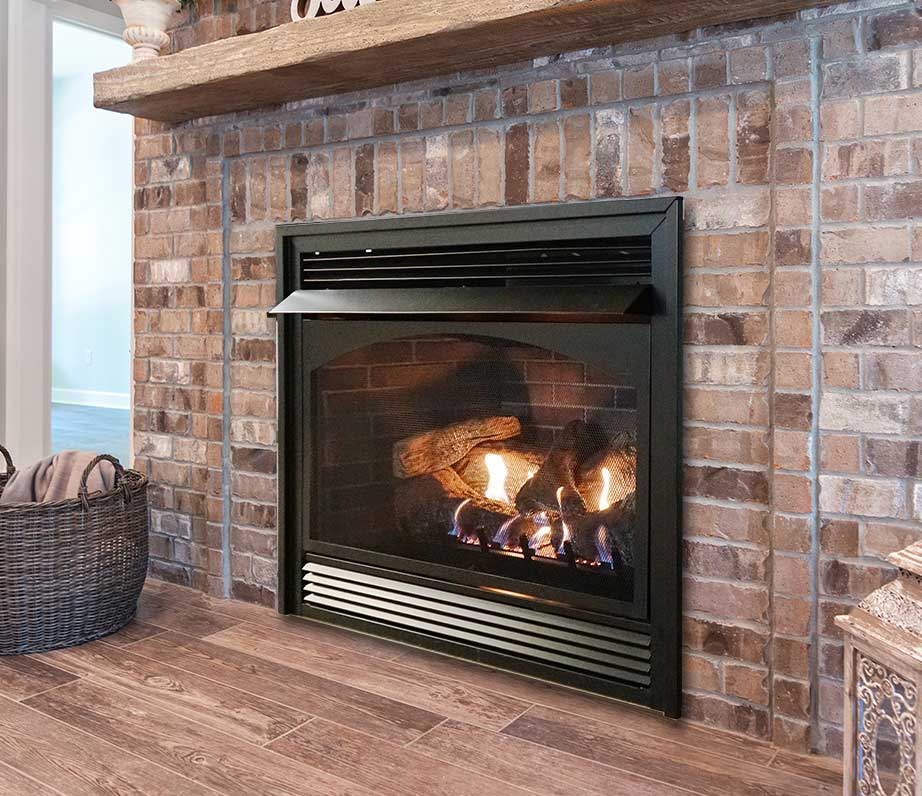
Innsbrook Fireplace Inserts
Empire the Innsbrook Vent-Free Inserts in two sizes (20,000 BTUs and 28,000 BTUs) so you are sure to find one to fit your existing wood-burning fireplace. The Innsbrook inserts feature Banded Brick Liners, a fine mesh barrier screen, and hand-painted ceramic fiber logs on a variable-flame burner. The Innsbrook Insert lights at the flick of a switch to produce consistent, reliable heat, even when electric power fails.

Carol Rose Coastal Collection
The Carol Rose Coastal Collection includes outdoor fireplaces, fireboxes that let you create your own system with a traditional log set and burner or a contemporary burner, and fire pits with optional multi-color LED lighting in two sizes. With so many choices you are sure to find a fireplace that adds a perfect glow to your outdoor lifestyle.
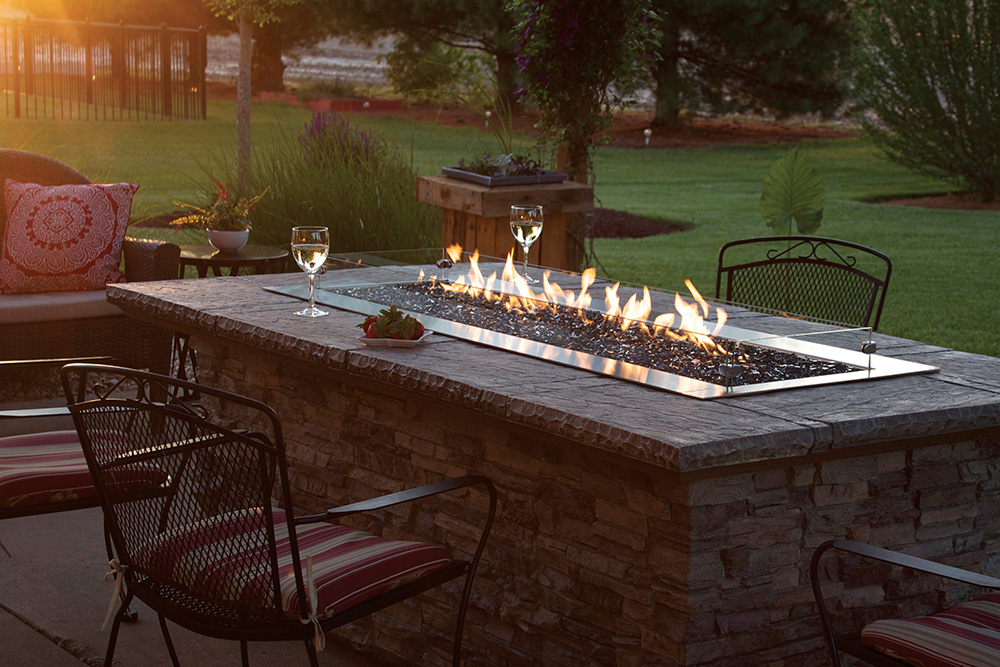
Accessories For Your Fireplace
Thermostats and Remotes
This convenient remote puts you in control, allowing you to adjust your gas log settings from the comfort of your seat. Empire Comfort Systems makes your life easier with the added luxury of fireplace accessories that improve the quality of your gas log experience.
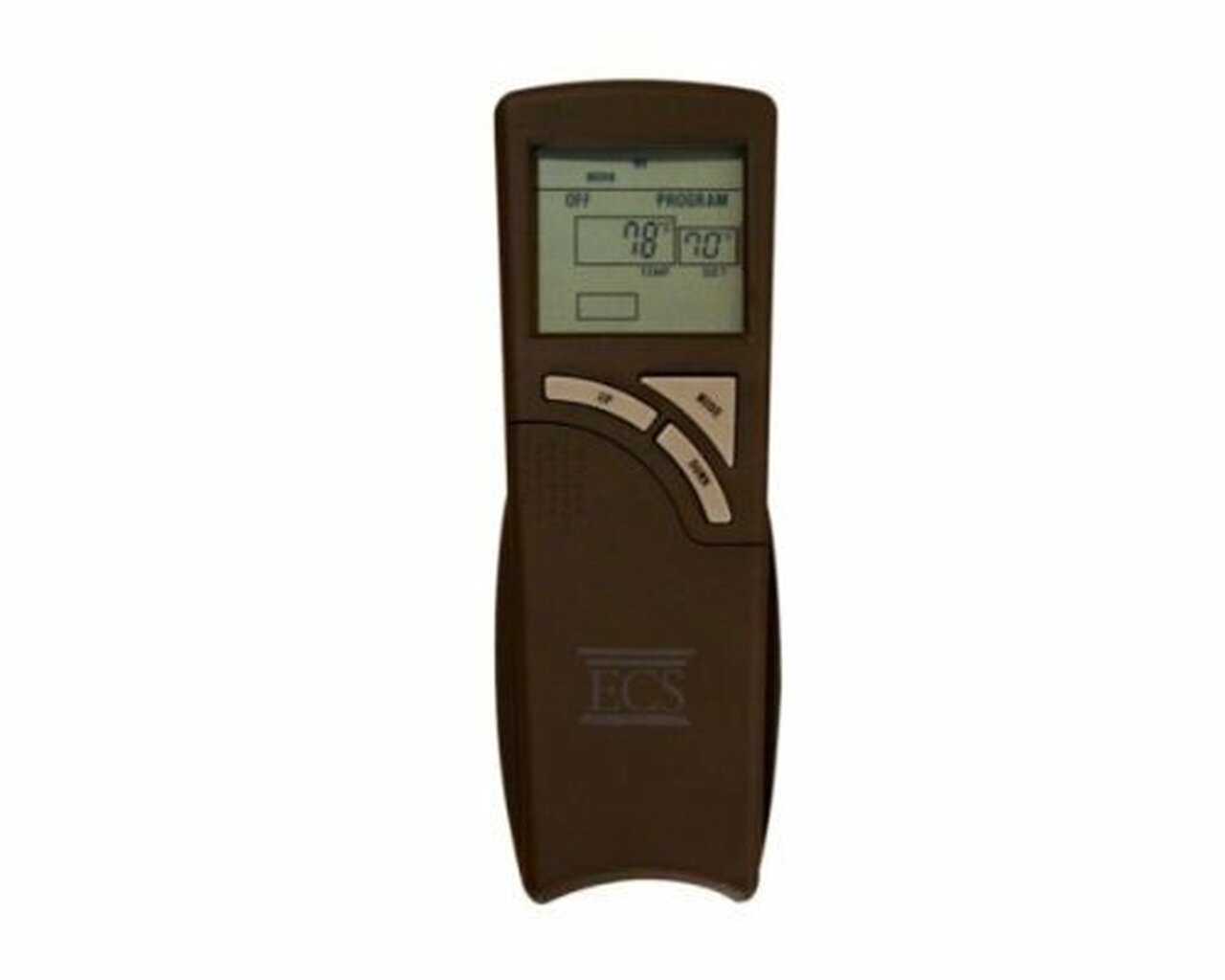
Fireplaces Blowers
A fireplace blower is used to circulate air around the unit's hot exterior before pushing it back into the room. Fireplace blowers help to circulate warm air and increase heat penetration into the room.

